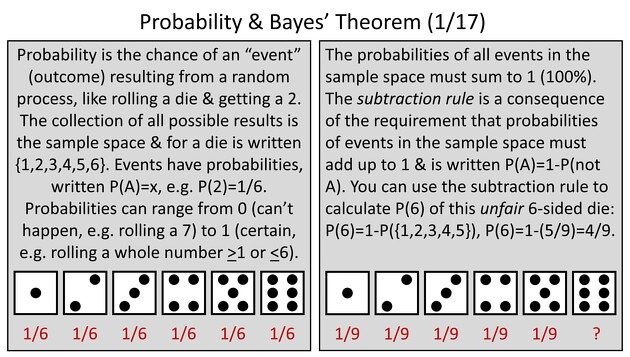The likelihood of an occurrence (called an “event”) can be expressed as a probability or as odds.
Probability (P) tells us how often a particular event occurs on average over the course of many trials. For example, the probability of rolling a 4 with a fair 6-sided die is 1/6. Think of probability as the ratio between how often the event of interest occurs (rolling a 4 in this example) divided by how often all the possible outcomes occur, including the event of interest.
Odds are a ratio, namely the probability of an event occurring divided by the probability of the event not occurring:
odds = P(event) / (1-P(event))
The odds of rolling a 4 with a fair 6-sided die is P(4) / (1-P(4)) = 1/6 / (1-1/6) = 0.2. Think of odds as the ratio between how often the event of interest occurs (rolling a 4 in this example) divided by how often all the other outcomes occur, i.e. excluding the event of interest.
Odds less than 1 correspond to probabilities less than 50%, and odds greater than 1 correspond to probabilities greater than 50%. This is easy to remember: if an event has a 50% probability, then the probability of it not occurring is also 50%. In that case, the odds are 0.5/0.5 or 1.
Odds can be converted to probability using the formula: probability = odds / (1+odds). For example, if we know that the odds of rolling a 4 with a fair 6-sided die is 0.2, the probability of rolling a 4 is 0.2 / (1+0.2) = 0.2/1.2 = 1/6.






 Unable to process the form. Check for errors and try again.
Unable to process the form. Check for errors and try again.